
Sapporo: The Heartbeat of Hokkaido
Discover Sapporo, the vibrant capital of Hokkaido, where stunning winter festivals, delectable cuisine, and scenic beauty await you year-round.
Sapporo, the largest city on Japan's northern island of Hokkaido, is a captivating blend of modernity and tradition. Famous for its annual Snow Festival, Sapporo transforms into a winter wonderland every February, drawing visitors with its stunning ice sculptures and festive atmosphere. The city's layout is unique, offering wide, tree-lined streets that make it easy to navigate, whether you're on foot or using public transportation. For food lovers, Sapporo is a paradise. Renowned for its fresh seafood, especially crab, as well as its rich and creamy miso ramen, the city offers a culinary journey that delights the senses. The Sapporo Beer Museum is another must-visit, offering insights into the history of Japan's oldest beer brand, along with tastings that will please any beer enthusiast. Nature enthusiasts will find plenty to love in Sapporo. The nearby Mount Moiwa offers breathtaking views of the city, particularly at night. In summer, Odori Park blossoms with flowers and hosts events that make it a lively place to relax. For a touch of history, the Historical Village of Hokkaido provides a glimpse into the region's past with its well-preserved buildings and engaging exhibits.
Local tips in Sapporo
- Visit in February to experience the world-famous Sapporo Snow Festival.
- Try the local miso ramen and fresh seafood, especially the crab dishes.
- Use the efficient public transport system to easily navigate the city.
- Take a ride on the Mount Moiwa Ropeway for panoramic city views.
- Spend some time at Odori Park, especially during the summer months.
- Explore the Historical Village of Hokkaido for a rich cultural experience.
Neighbourhoods in Sapporo
Sapporo: The Heartbeat of Hokkaido
Sapporo, the largest city on Japan's northern island of Hokkaido, is a captivating blend of modernity and tradition. Famous for its annual Snow Festival, Sapporo transforms into a winter wonderland every February, drawing visitors with its stunning ice sculptures and festive atmosphere. The city's layout is unique, offering wide, tree-lined streets that make it easy to navigate, whether you're on foot or using public transportation. For food lovers, Sapporo is a paradise. Renowned for its fresh seafood, especially crab, as well as its rich and creamy miso ramen, the city offers a culinary journey that delights the senses. The Sapporo Beer Museum is another must-visit, offering insights into the history of Japan's oldest beer brand, along with tastings that will please any beer enthusiast. Nature enthusiasts will find plenty to love in Sapporo. The nearby Mount Moiwa offers breathtaking views of the city, particularly at night. In summer, Odori Park blossoms with flowers and hosts events that make it a lively place to relax. For a touch of history, the Historical Village of Hokkaido provides a glimpse into the region's past with its well-preserved buildings and engaging exhibits.
When is the best time to go to Sapporo?
Iconic landmarks you can’t miss
Shiroi Koibito Park
Experience the magic of chocolate at Shiroi Koibito Park, a delightful theme park in Sapporo, Hokkaido, offering sweet adventures for all ages.

JR Tower
Discover JR Tower in Sapporo: A vibrant shopping mall and observation deck offering stunning city views and unique dining experiences.

Tanukikoji Shopping Street
Explore the vibrant Tanukikoji Shopping Street in Sapporo, a bustling arcade of shops and local delicacies in the heart of Hokkaido.

Sapporo TV Tower
Discover breathtaking views and the vibrant essence of Sapporo from the iconic Sapporo TV Tower, a must-visit observation deck in Hokkaido.

Sapporo Clock Tower
Discover the charm of Sapporo Clock Tower, a historical landmark and museum showcasing Hokkaido's rich cultural heritage and stunning architecture.

Sapporo Beer Museum
Explore the rich brewing heritage of Japan at the Sapporo Beer Museum, a unique attraction in Sapporo showcasing the art and history of beer.

Maruyama Park
Discover the beauty of Maruyama Park in Sapporo, a serene retreat filled with lush greenery, cultural landmarks, and family-friendly activities.

Nakajima Park
Explore the beauty and tranquility of Nakajima Park, Sapporo's urban oasis filled with cultural landmarks and serene landscapes.

Sapporo Hitsujigaoka Observation Hill
Discover breathtaking views and cultural heritage at Sapporo Hitsujigaoka Observation Hill, a must-visit scenic spot in Hokkaido.

Moerenuma Park
Experience the unique blend of art and nature at Moerenuma Park, Sapporo's urban oasis designed by Isamu Noguchi, perfect for relaxation and exploration.

Historical Village of Hokkaido
Explore the charm and history of Hokkaido at this open-air museum showcasing traditional architecture and the cultural heritage of Japan's northern island.

Asahiyama Memorial Park
Discover tranquility at Asahiyama Memorial Park in Sapporo, where beautiful landscapes and stunning views create the perfect escape for every traveler.

Hokkaidō Government Office
Explore the historic Hokkaidō Government Office, a stunning blend of architecture and nature in the heart of Sapporo, Hokkaidō.

Botanic Garden Hokkaidō University
Explore the lush landscapes and diverse flora at the Botanic Garden of Hokkaidō University, a serene escape in the heart of Sapporo.

Hōhei Kan
Discover the architectural beauty and rich history of Hōhei Kan, a heritage building and historical landmark in Sapporo, Hokkaido.

Unmissable attractions to see
Shiroi Koibito Park
Explore the enchanting Shiroi Koibito Park in Sapporo, where chocolate-making magic meets beautiful gardens and delightful attractions for everyone.
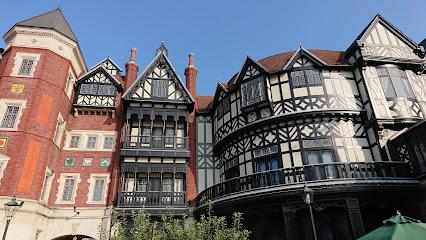
Sapporo TV Tower
Discover breathtaking views of Sapporo from the iconic Sapporo TV Tower, your gateway to stunning landscapes and cityscapes.

Sapporo Clock Tower
Discover the historic Sapporo Clock Tower, a charming symbol of Hokkaido's rich heritage and a must-see attraction for every traveler.

Sapporo Beer Museum
Explore the Sapporo Beer Museum, where Japan's brewing history comes alive through engaging exhibits and delightful tastings.

Hokkaido Jingu
Discover the tranquil beauty of Hokkaido Jingu, a Shinto shrine in Sapporo, where culture, nature, and spirituality intertwine.

Otaru Music Box Museum
Explore the enchanting Otaru Music Box Museum, where melodies come to life and craftsmanship tells a story in the heart of Hokkaido.

Nijo Market
Experience the authentic taste of Hokkaido at Nijo Market, a bustling seafood haven in Sapporo filled with fresh produce and local delicacies.
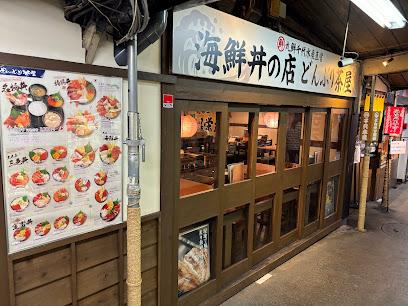
Maruyama Park
Explore the lush landscapes and serene atmosphere of Maruyama Park, an urban oasis in the heart of Sapporo, Hokkaido.
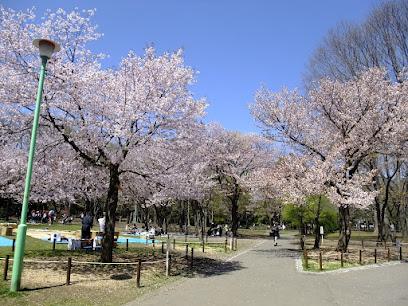
Daiwa House Premist Dome
Explore the Daiwa House Premist Dome in Sapporo, a premier sports and event venue offering thrilling experiences and cultural events year-round.

Otaru Aquarium
Explore Otaru Aquarium: A captivating journey into the depths of marine life in the heart of Hokkaido, Japan.

Road and riverside Station Flower Road Eniwa
Experience the tranquility and beauty of Flower Road Eniwa, a scenic rest stop in Hokkaido offering local delicacies and stunning floral displays.

Sankaku Market
Experience the authentic taste of Hokkaido at Sankaku Market, Otaru's bustling hub for fresh seafood and local delicacies.

Hokkaido Ballpark F Village
Experience the thrill of baseball and family fun at Hokkaido Ballpark F Village, a premier sports complex in Kitahiroshima, Japan.

Moerenuma Park
Experience the serene beauty and artistic charm of Moerenuma Park in Sapporo, where nature and creativity unite in perfect harmony.

Hōheikyō Hot Spring
Discover the serene beauty and therapeutic waters of Hōheikyō Hot Spring in Sapporo, Hokkaido, your ultimate relaxation destination.

Essential places to dine
Suage+
Experience authentic Japanese curry at Suage+, a must-visit culinary destination in Sapporo's Chuo Ward.

Teshikaga Ramen
Discover Teshikaga Ramen in Sapporo: A haven for ramen lovers offering authentic flavors and cozy ambiance.

Sapporo Ramen Haruka
Experience authentic Hokkaido flavors at Sapporo Ramen Haruka - a must-visit destination for ramen lovers in Japan.

JYOTI The Door to India
Discover the vibrant flavors of India at JYOTI The Door to India in Sapporo - a culinary journey not to be missed.

Hakodate Uni Murakami Nippon Life Sapporo Building Store
Experience exquisite seafood at Hakodate Uni Murakami in Sapporo, where fresh uni and Japanese culinary artistry come together for an unforgettable meal.

Shikihanamaru Tokeidai
Discover authentic sushi at Shikihanamaru Tokeidai in Sapporo – where tradition meets culinary excellence.

Kani Honke Sapporo station Ekimae
Savor the authentic taste of Hokkaido's seafood delicacies at Kani Honke – a premier Japanese crab restaurant in Sapporo.

Tokachi Butadon Ippin(Stelar place -Sapporo station)
Discover Tokachi Butadon Ippin: A Culinary Gem in Sapporo Offering Authentic Hokkaido Flavors with Every Bite.

Kinotoya
Discover Kinotoya in Sapporo – where delectable desserts meet warm hospitality in a cozy café setting.

Gotsubo Oyster Bar
Experience the freshest oysters and delightful seafood dishes at Gotsubo Oyster Bar in Sapporo - a true culinary treasure!

Wagyu Shabushabu Sukiyaki Fujiyama
Experience authentic Japanese cuisine with premium Wagyu Shabushabu and Sukiyaki at Sapporo's top-rated dining destination.

Ajinotokeidai Ekimae Ten
Experience authentic Hokkaido flavors at Ajinotokeidai Ekimae Ten - where every bowl tells a story of tradition and taste.

Picante Sapporo Eki-mae Shop
Discover the rich flavors of authentic Japanese curry at Picante Sapporo Eki-mae Shop - a culinary delight in the heart of Hokkaido.

Moliere
Experience exquisite French cuisine at Moliere in Sapporo, where local Hokkaido flavors meet classic culinary techniques.

Restaurant & Bar “SKY J”/JR Tower Hotel Nikko Sapporo
Experience fine Western dining at Sky J in Sapporo's JR Tower Hotel, offering stunning views and exquisite cuisine that elevate your meal.

Markets, malls and hidden boutiques
Tanukikoji Shopping Street
Experience the vibrant Tanukikoji Shopping Street in Sapporo, where shopping meets culinary delights in a unique cultural atmosphere.

Daimaru Sapporo
Explore Daimaru Sapporo, your one-stop destination for shopping, dining, and unique souvenirs in the heart of Hokkaido.

Sapporo Factory
Experience the unique blend of history and shopping at Sapporo Factory, a vibrant mall in the heart of Hokkaido's capital.
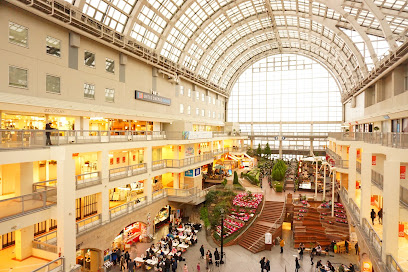
Ario Sapporo
Explore the eclectic mix of shops and dining at Ario Sapporo, the ultimate shopping mall experience in Hokkaido's vibrant capital.

Sapporo Stellar Place
Experience the vibrant shopping and dining scene at Sapporo Stellar Place, a top destination for tourists in Hokkaido.

Mitsukoshi Department Store Sapporo
Discover luxury shopping at Mitsukoshi Department Store Sapporo, where tradition meets modernity in a spectacular retail experience.

Marui Imai Sapporo Main Store
Explore the vibrant shopping and culinary delights at Marui Imai Sapporo Main Store, a top destination for tourists in Hokkaido.
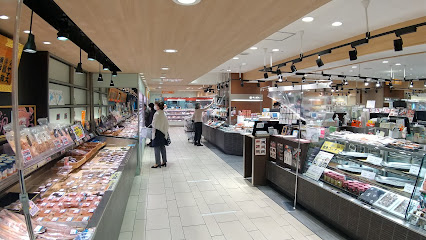
Sapporo Underground Shopping Malls Aurora Town
Explore the vibrant Sapporo Underground Shopping Malls Aurora Town for an unforgettable shopping and dining experience beneath the city streets.

APIA
Discover the dynamic APIA Shopping Mall in Sapporo, where shopping, dining, and culture converge in an unforgettable experience.

Akarenga Terrace
Discover Akarenga Terrace in Sapporo – A vibrant shopping mall blending modern retail with the charm of traditional Japanese culture.

NORBESA
Discover the ultimate shopping experience at NORBESA, where fashion, food, and fun meet in the heart of Sapporo, Hokkaido.

PARCO
Explore PARCO, Sapporo's dynamic shopping mall, where fashion, food, and culture converge in a vibrant urban setting.

MARUZEN & JUNKUDO Sapporo
Explore the literary treasures of Japan at MARUZEN & JUNKUDO Sapporo, a captivating bookstore offering a unique blend of magazines, comics, and stationery.

Hands Sapporo Store
Discover a world of unique gifts, home goods, and Japanese stationery at Hands Sapporo Store in Sapporo, Hokkaido.

Pole Town
Experience the vibrant shopping and dining at Pole Town, Sapporo's enchanting underground mall with a local touch.
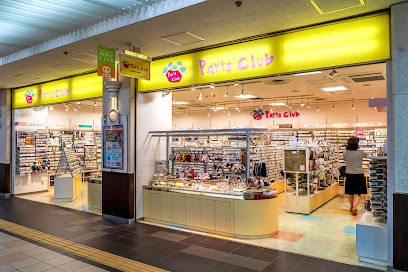
Essential bars & hidden hideouts
THE NIKKA BAR
Discover the essence of Japanese whisky culture at The Nikka Bar, a cozy spot in Sapporo perfect for nightlife enthusiasts.

Beer Bar NORTH ISLAND
Experience the best of Hokkaido's craft beer scene at Beer Bar NORTH ISLAND in Sapporo, where local flavors and cozy vibes meet.

The Long Bar
Experience the vibrant nightlife of Sapporo at The Long Bar, where local flavors and a welcoming ambiance meet for an unforgettable evening.

Flair bar es
Discover the vibrant nightlife of Sapporo at Flair Bar es, where exquisite cocktails meet lively entertainment in an unforgettable setting.

Saint John's Wood
Discover the cozy charm of Saint John's Wood, a welcoming Irish pub in Sapporo, serving hearty meals and drinks in a vibrant atmosphere.

Yamazaki
Experience the essence of Sapporo nightlife at Yamazaki, where exquisite drinks meet a cozy, sophisticated atmosphere.

the bar nano. gould.
Discover the essence of Sapporo's nightlife at Bar Nano. Gould, where craft cocktails and local spirits come together in a cozy atmosphere.

Rad Brothers
Discover the vibrant atmosphere and diverse menu of Rad Brothers, a unique bar in Sapporo blending American and Japanese cuisine.

Ikkei
Experience the vibrant nightlife of Sapporo at Ikkei, where unique drinks and a cozy atmosphere await.

the bar nano. femto.
Discover the vibrant nightlife of Sapporo at nano. femto., a trendy bar known for its creative cocktails and cozy ambiance.
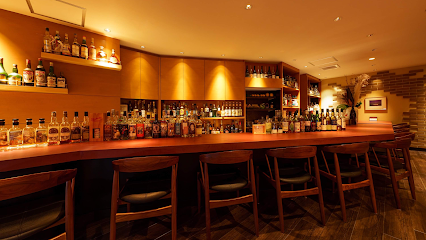
Bearfoot
Experience the essence of Hokkaido at Bearfoot, a premier grill bar in Sapporo offering delicious grilled dishes and a vibrant atmosphere.

The Bow Bar
Experience the vibrant nightlife of Sapporo at The Bow Bar, offering exquisite drinks and a cozy atmosphere for unforgettable nights.

BAR ReCalm
Discover the serene ambiance and exquisite drink selection at BAR ReCalm, a must-visit bar in the heart of Sapporo, Hokkaido.

Maduro
Discover Maduro, Sapporo's stylish bar known for its extensive drink menu and vibrant atmosphere, perfect for nightlife enthusiasts.

Bar OWL&ROOSTER
Experience the art of cocktail creation at Bar OWL&ROOSTER, a cozy haven in Sapporo's nightlife, perfect for unique drinks and friendly vibes.

Local Phrases
-
- Helloこんにちは
[kon-ni-chi-wa] - Goodbyeさようなら
[sa-yo-u-na-ra] - Yesはい
[ha-i] - Noいいえ
[i-i-e] - Please/You're welcomeどうぞ
[do-u-zo] - Thank youありがとうございます
[a-ri-ga-to-u-go-za-i-ma-su] - Excuse me/Sorryすみません
[su-mi-ma-se-n] - How are you?お元気ですか?
[o-ge-n-ki-de-su-ka] - Fine. And you?元気です。あなたは?
[ge-n-ki-de-su.a-na-ta-wa] - Do you speak English?英語を話せますか?
[e-i-go-o-ha-na-se-ma-su-ka] - I don't understandわかりません
[wa-ka-ri-ma-se-n]
- Helloこんにちは
-
- I'd like to see the menu, pleaseメニューを見せてください
[me-n-yuu-o-mi-se-te-ku-da-sa-i] - I don't eat meat肉を食べません
[ni-ku-o-ta-be-ma-se-n] - Cheers!乾杯!
[ka-n-pa-i] - I would like to pay, pleaseお会計をお願いします
[o-ka-i-ke-i-o-o-ne-ga-i-shi-ma-su]
- I'd like to see the menu, pleaseメニューを見せてください
-
- Help!助けて!
[ta-su-ke-te] - Go away!行って!
[i-t-te] - Call the Police!警察を呼んで!
[ke-i-sa-tsu-o-yo-n-de] - Call a doctor!医者を呼んで!
[i-shi-o-yo-n-de] - I'm lost道に迷いました
[mi-chi-ni-ma-ya-i-ma-shi-ta] - I'm ill具合が悪い
[gu-a-i-ga-wa-ru-i]
- Help!助けて!
-
- I'd like to buy...買いたいです
[ka-i-ta-i-de-su] - I'm just looking見てるだけです
[mi-te-ru-da-ke-de-su] - How much is it?いくらですか?
[i-ku-ra-de-su-ka] - That's too expensiveそれは高すぎます
[so-re-wa-ta-ka-su-gi-ma-su] - Can you lower the price?値段を下げてもらえますか?
[ne-da-n-o-sa-ge-te-mo-ra-e-ma-su-ka]
- I'd like to buy...買いたいです
-
- What time is it?今何時ですか?
[i-ma-na-n-ji-de-su-ka] - It's one o'clock一時です
[i-chi-ji-de-su] - Half past (10)10時半
[ju-u-ji-ha-n] - Morning朝
[a-sa] - Afternoon午後
[go-go] - Evening夕方
[yu-u-ga-ta] - Yesterday昨日
[ki-n-o-u] - Today今日
[kyo-u] - Tomorrow明日
[a-shi-ta] - 1一
[i-chi] - 2二
[ni] - 3三
[san] - 4四
[shi] - 5五
[go] - 6六
[roku] - 7七
[shichi] - 8八
[hachi] - 9九
[kyu-u] - 10十
[ju-u]
- What time is it?今何時ですか?
-
- Where's a/the...?どこですか?
[do-ko-de-su-ka] - What's the address?住所は何ですか?
[ju-u-sho-wa-na-n-de-su-ka] - Can you show me (on the map)?地図で見せていただけますか?
[chi-zu-de-mi-se-te-i-ta-da-ke-ma-su-ka] - When's the next (bus)?次のバスはいつですか?
[tsu-gi-no-ba-su-wa-i-tsu-de-su-ka] - A ticket (to ....)チケット (....へ)
[chi-ke-t-to]
- Where's a/the...?どこですか?
History of Sapporo
-
Sapporo's history as a modern city began in 1868 when it was established as the administrative center of Hokkaido under the Meiji government's colonization policy. The government aimed to develop the northern territories and protect them from potential Russian expansion.
-
Hokkaido University, originally named Sapporo Agricultural College, was established in 1876. It was the first higher education institution in Japan to adopt a Western-style curriculum, and it played a crucial role in the agricultural and economic development of Hokkaido.
-
The Kaitakushi Brewery, established in 1876, is the birthplace of the famous Sapporo Beer. The brewery was part of the broader efforts by the Kaitakushi, the Hokkaido Development Commission, to modernize the region and introduce Western technology and industries.
-
The Sapporo Snow Festival began in 1950 when local high school students built six snow statues in Odori Park. The festival has since grown into an internationally renowned event, attracting millions of visitors each year to enjoy the incredible snow and ice sculptures.
-
Sapporo gained international recognition when it hosted the 1972 Winter Olympics, the first Winter Games to be held in Asia. The event showcased Sapporo's winter sports facilities and contributed to its reputation as a premier winter destination.
-
Odori Park, a 1.5-kilometer-long park in the heart of Sapporo, has played a significant role in the city's cultural life. Originally a firebreak, it was transformed into a public space and has hosted numerous events, including the Sapporo Snow Festival and the Sapporo Lilac Festival.
-
The indigenous Ainu people have a rich cultural heritage that predates Japanese settlement in Hokkaido. The Ainu influence is evident in various aspects of Sapporo's culture, including place names, traditional crafts, and the city's annual Ainu cultural events.
-
Built in 1878 as part of the Sapporo Agricultural College, the Sapporo Clock Tower is one of the oldest buildings in the city and serves as a symbol of Sapporo's history and development. The clock tower continues to chime every hour, a reminder of the city's past.
-
Moerenuma Park, designed by the renowned sculptor Isamu Noguchi, opened in 2005. The park represents a fusion of art and nature, with its innovative landscape design and large-scale sculptures, highlighting Sapporo's commitment to modern urban development and cultural expression.
-
The Hokkaido Shrine, established in 1869, is dedicated to the deities of Hokkaido's pioneering era. The annual Hokkaido Shrine Festival, held every June, features traditional Shinto ceremonies, parades, and festivities, celebrating the cultural heritage of the region.
Sapporo Essentials
-
Sapporo is located on the northern island of Hokkaido in Japan. The nearest international airport is New Chitose Airport (CTS), which is approximately 45 kilometers from the city center. From the airport, you can take the JR Rapid Airport train to Sapporo Station, a journey that takes around 40 minutes. Alternatively, there are buses and taxis available. Domestic flights from major Japanese cities like Tokyo, Osaka, and Nagoya also connect to New Chitose Airport.
-
Sapporo boasts an efficient public transportation system, including buses, subways, and trams. The Sapporo Subway has three lines (Namboku, Tozai, and Toho) that cover most tourist attractions. The streetcar network is a convenient way to explore central Sapporo. Buses are also widely available for destinations not covered by the subway or streetcar. Taxis are plentiful but more expensive. For those who prefer cycling, rental bikes are available, and Sapporo is a bike-friendly city.
-
The official currency in Japan is the Japanese Yen (JPY). Credit cards are widely accepted in hotels, restaurants, and larger shops, but cash is still commonly used, especially in smaller establishments and rural areas. ATMs are available throughout the city, and many convenience stores have 24-hour ATMs that accept international cards. It is advisable to carry some cash for small purchases and transportation.
-
Sapporo is generally a very safe city for tourists. However, as with any urban area, it is wise to stay vigilant and take standard precautions. Avoid secluded areas at night and keep an eye on your belongings in crowded places. There are no specific neighborhoods in Sapporo known for high crime rates targeting tourists. Always ensure your accommodations are secure and avoid displaying large amounts of cash or valuables.
-
In case of emergency, dial 110 for police assistance and 119 for fire and medical emergencies. Sapporo has several hospitals and clinics that offer medical services. It is recommended to have travel insurance that covers medical emergencies. For minor health issues, pharmacies are abundant and often have English-speaking staff. Keep a list of emergency contacts, including your country's embassy or consulate.
-
Fashion: Do dress neatly and modestly. Avoid overly casual attire like flip-flops and tank tops in the city center. Religion: Do respect religious customs and remove your shoes when entering temples or shrines. Public Transport: Do be quiet and respectful on public transport. Don’t talk loudly on phones or eat/drink. Greetings: Do bow slightly as a sign of respect when greeting. Handshakes are less common. Eating & Drinking: Do try local dishes and eat quietly. Don’t tip, as it is not customary in Japan.
-
To experience Sapporo like a local, visit the Sapporo Nijo Market for fresh seafood and local delicacies. Take a stroll in Odori Park, especially during seasonal festivals like the Sapporo Snow Festival. Join locals in relaxing at one of the many onsen (hot spring) facilities in and around the city. Engage with residents at local izakayas (pubs) to learn about Sapporo's culture and history. Don't miss the chance to explore the scenic areas around Sapporo, such as Mount Moiwa for panoramic views and Jozankei Onsen for a soothing hot spring experience.
Trending Landmark in Sapporo
-
Shiroi Koibito Park
-
JR Tower
-
Tanukikoji Shopping Street
-
Sapporo TV Tower
-
Sapporo Clock Tower
-
Sapporo Beer Museum
-
Maruyama Park
-
Nakajima Park
-
Sapporo Hitsujigaoka Observation Hill
-
Moerenuma Park
-
Historical Village of Hokkaido
-
Asahiyama Memorial Park
-
Hokkaidō Government Office
-
Botanic Garden Hokkaidō University
-
Hōhei Kan
Nearby Cities to Sapporo
-
Things To Do in Kanazawa
-
Things To Do in Tokyo
-
Things To Do in Nagoya
-
Things To Do in Kyoto
-
Things To Do in Nara
-
Things To Do in Osaka
-
Things To Do in Hiroshima
-
Things To Do in Chuncheon
-
Things To Do in Pohang
-
Things To Do in Andong
-
Things To Do in Gyeongju
-
Things To Do in Ulsan
-
Things To Do in Daegu
-
Things To Do in Seoul
-
Things To Do in Busan


















